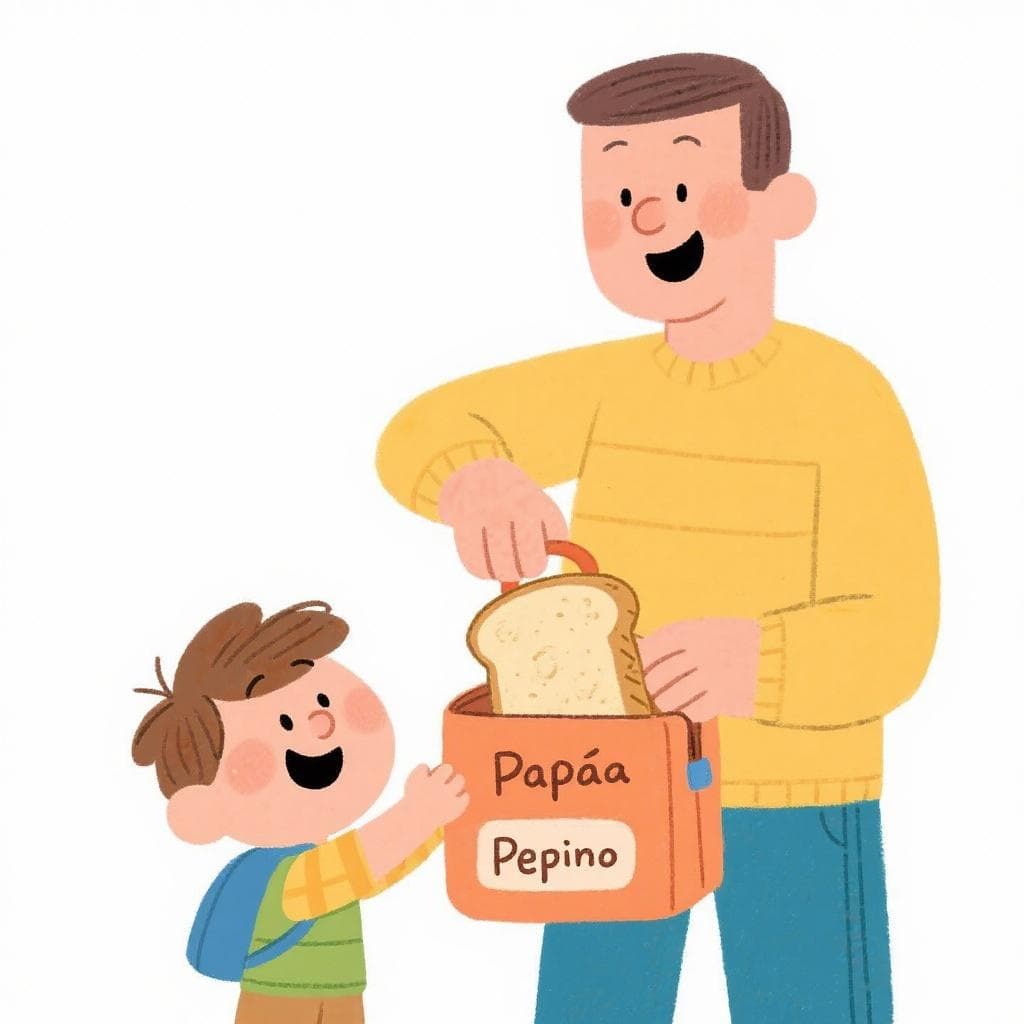Papá pone pan para Pepín.
pa-PÁ PO-ne pan PA-ra pe-PÍN
Dad puts bread for Pepín.
🔊 Listen & Practice
Start with slow speed to master pronunciation, then gradually increase to challenge yourself.
🎨 Visualization

Papá pone pan para Pepín. Can you say it without puffing out your 'p's?
🎯 Pronunciation Focus
The Unaspirated 'P' Sound
/p/This is the main challenge. In Spanish, the 'p' sound is made without the puff of air we use in English (like in 'pen'). Hold your hand in front of your mouth when you say 'papá' – you shouldn't feel a strong burst of air.
The Soft 'r' (vibrante simple)
/ɾ/The 'r' in 'para' is a single, quick tap of the tongue against the roof of your mouth, just behind your teeth. It sounds like the 'tt' in the American English pronunciation of 'butter' or 'water'.
📝 Practice Breakdown
Start here. Focus on making the 'p' sound short and crisp, with no puff of air. Try saying it while holding a piece of paper in front of your mouth – the paper shouldn't move much.
Now add the second part. Notice the quick tap of the 'r' in 'para'. It's very light. Finish with two more crisp 'p' sounds in 'Pepín'.
Key Words in This Tongue Twister:
📚 Background
This is a classic beginner's tongue twister in Spanish. It's short, simple, and perfect for practicing the clean, unaspirated 'p' sound, which is a fundamental building block for clear Spanish pronunciation.
❌ Common Pitfalls
Puffing Your 'P's (Aspiration)
Mistake: "Pronouncing 'papá' or 'pan' with a strong puff of air, like the English words 'papa' or 'pan'."
Correction: In Spanish, the 'p' is 'unaspirated'. To practice, place your hand or a tissue in front of your mouth. When you say 'papá' correctly in Spanish, you should feel very little to no air. It's a much cleaner, crisper sound.
Using the English 'r'
Mistake: "Pronouncing the 'r' in 'para' like the 'r' in the English word 'car' or 'party'."
Correction: The Spanish 'r' between vowels is a single, quick tap of your tongue against the roof of your mouth. Think of how you say the 'tt' in the American English word 'butter' or 'little'. It's that same quick flap.
🌎 Where It's Used
General Spanish
This is a universal tongue twister used throughout the Spanish-speaking world, especially for children learning to speak.
🔗 Related Tongue Twisters
The Pepín Pace Challenge
Say it once slowly and perfectly. Now, try to say it five times in a row as fast as you can without letting any puffs of air escape on the 'p' sounds. Can you do it in under 7 seconds?
🏷️ Tags
Frequently Asked Questions
What does 'unaspirated' mean?
It's just a way of saying 'no puff of air.' In English, when we say a word like 'pit,' a burst of air comes out with the 'p.' In Spanish, that burst of air doesn't happen. The sound is made only with the lips popping open, making it sound cleaner and quicker.
Is Pepín a common name?
Pepín is a diminutive or nickname for José, similar to 'Joey' for 'Joseph' in English. While not as common today, it's a classic, friendly-sounding name that works perfectly in this children's rhyme.

